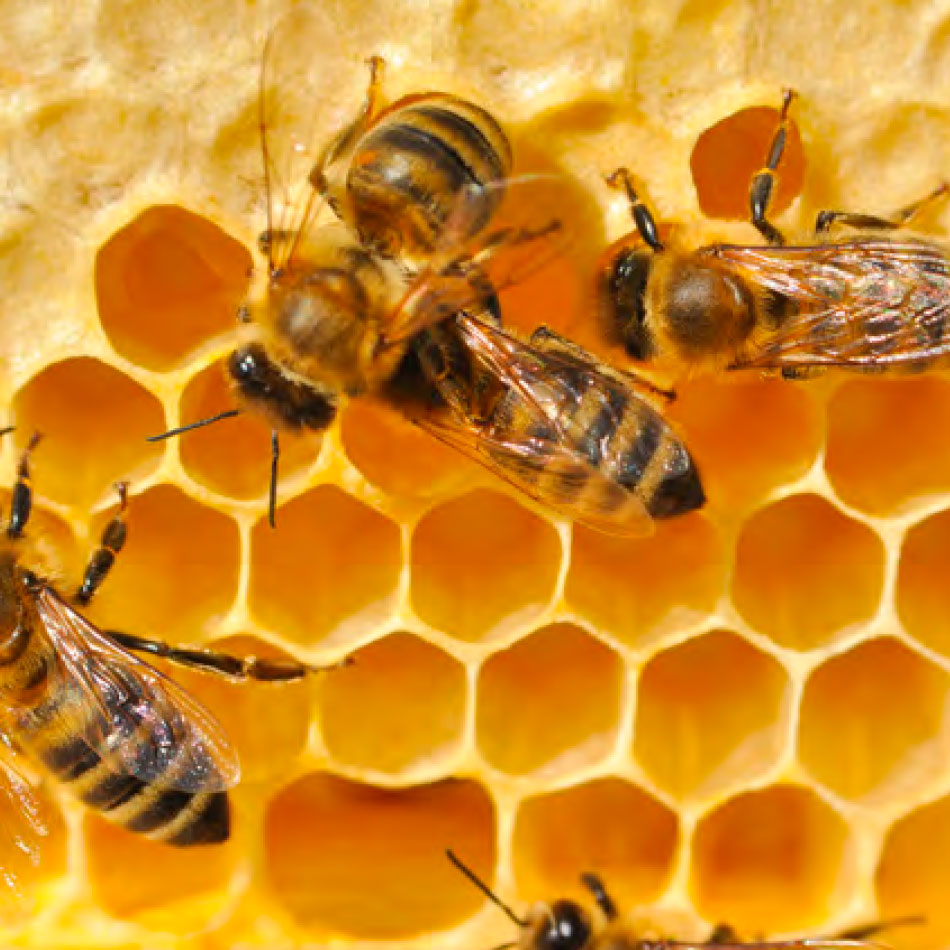Honey Hexagons
Learn about the geometry behind honeycombs

Honey bees make their homes in enclosed spaces like hollow trees or in structures made by beekeepers. Beehives are composed of thousands of hexagon-shaped cells made of wax. These cells act as a place for eggs laid by the queen bee to develop into young bees, as well as a place for the bees to store honey.
Bees are always busy making new cells out of wax. Young bees have special glands on their abdomens to make wax, which they and other bees in the hive use to build new cells. They chew the wax to soften it, making it more pliable, and use their mouths to measure the thickness of the cells to ensure they’re all the same.
Each cell needs to be just the right length to ensure it has enough space for a young bee to grow. The cells are also designed to store as much honey as possible using the least amount of wax.
How are hexagons formed?
A beehive is a busy place! Every bee has a job. Some are busy making cells, some feed the growing bee larvae, some put honey into the completed cells and others yet cover the filled cells with wax.
All this activity makes the hive very warm. This makes the wax more malleable and fluid, allowing it to flow into the small spaces between the cells and form the familiar hexagons seen inside a hive. These hexagons lock the cells in place, giving the honeycomb strength. If the hive gets too hot, some of the worker bees cool it off by fanning their wings. Talk about teamwork!
Honey bees collect flower nectar in their honey stomachs. Some of the bees head out of the hive to collect the nectar from flowers. When their honey stomachs are full, they return home and deliver the nectar to other worker bees. There, the bees work together to remove moisture from the nectar, eventually transforming it into honey.
The bees store their new honey in a double layer of hexagonal cells. Once they have filled all the cells with honey, they cover them with wax and start on another layer. The bees don’t line up the cells with the ones in the previous row. This slight shift in alignment results in a stronger honeycomb.
Thanks to the hexagon shape of the cells, the honeycomb is strong enough to store all the honey produced by the bees—plus the bees themselves!